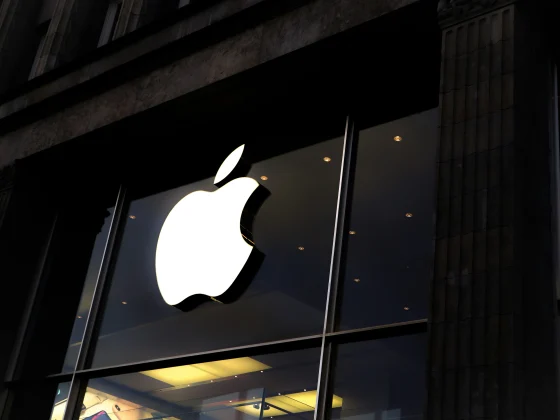Written by Lidia Vijga, co-founder at DeckLinks
Startup founders don’t live in neat compartments. We live in the grey. One minute we’re fixing a database index, the next we’re reading bedtime stories, then we’re pitching an angel in a Twitter DM. Traditional work life balance says, “Clock out, recharge, come back fresh.” It treats work and personal life as two worlds that are supposed to remain separate, but work life blend challenges that separation. Reality says, “You’re always on.”
So please, let’s stop beating ourselves up for failing a system that was never built for us. We don’t need work life balance. We need a work life blend.
Why I’m Done Preaching “Work Life Balance”
I’ve been that founder sitting in a coffee shop at eleven at night pretending I still had a social life. Friends would ask, “When are you free?” and I would answer, “Soon.” Weeks later “soon” still hadn’t happened. Those same friends sent me articles on “work-life balance.” Unplug, they said. Take Friday off. Plan a spa day. That advice works if you run a nine-to-five. It collapses the moment you are fighting for your first ten customers.
I stopped chasing balance. I chose the blend, because with blend, you don’t have to compromise one part of your life for another.
Blend means I let work and life intertwine on my terms. I reply to a beta-user’s email at dinner without guilt, and I brainstorm a product name while brushing my teeth. The trick is to set clear guardrails so the blend doesn’t swallow you. This mindset is how I built BYVI, grew DeckLinks, and kept my sanity.
What Work-Life Blending Really Means for Startup Founders
Work-life blending means making your venture part of your day so the line between work and life fades. It does not mean working twenty-four hours a day. It means designing a rhythm where work fuels you instead of draining you. This is about making work an intentional, meaningful part of your life, rather than letting it happen by default.
Researchers call this role integration. When people see their roles as complementary not competing, they experience lower stress and higher engagement. Flexibility matters. A 2023 Mental Health America survey found only 17% of flexible-schedule workers reported poor mental health versus 27% without that choice. The same study said 92% believed flexibility makes them happier people. Translation: Blending works because it hands you control.
Why Work Life Balance Fails Founders
Work life balance, as a concept, was born on factory floors. Workers clocked in, hammered metal, clocked out, and left their obligations on the conveyor belt. Our grandparents needed that barrier. The work was physical, the rest was also physical – a clear on – off switch. Today, your factory fits inside your phone. There is no whistle at five o’clock.
Modern media makes it worse. Social feeds show a founder meditating at seven, signing term sheets at ten, surfing at two, and enjoying candle-lit dinner at six. You stare at the reel from your cluttered desk and think something is wrong with you.
Obviously that reel is edited.
Real life looks like Slack pings mid-wave set and Zoom calls from a parking lot.
Numbers confirm the chaos. Over 20% of small-business owners grind more than 50 hours each week, and nearly half admit they can’t unplug for more than 11 days per year, according to an Adobe Work-Life survey. The same study says 82% of entrepreneurs lost sleep last year worrying about work. That’s not failure. That’s the early-stage reality.
Why the Work Life Blend Wins
Momentum is fragile. When you finally land a growth lever – maybe a cold-email script, maybe a viral TikTok – you can’t tell momentum, “Hold that thought, I’m balanced today.” Blend allows you to ride the wave when it shows up.
Creativity ignores office hours. Good ideas pop while you jog or fold laundry. Balance tells you to switch off. Blend tells you to catch the idea, jot it down, and then get back to the jog.
Your life experience feeds your startup. I’m an immigrant in Toronto. My background, my city, my network, even my evening walks shape the founder stories I publish on BYVI.
Blend lets every part of you add fuel.
Culture starts with the founder. If you preach balance yet answer Slack at midnight, the team stops believing you. If you openly embrace blend and show the healthy limits you keep, they model that instead.
3 Pillars of Sustainable Work Life Blending
Over years of trial, error, and a few near meltdowns, I refined 3 pillars.
1. Non-Negotiables: Draw the Bright Lines
A non-negotiable is a life element that, if sacrificed repeatedly, weakens your health or identity. You only get a handful. Mine are simple.
- I protect 8 hours of sleep. It’s non-negotiable because when I sacrifice sleep I make worse decisions, lose patience with my team, and burn out faster than any deadline can justify.
- I take long showers. For me this is a small ritual where I deliberately become unreachable – no Slack, no calls – and that enforced solitude is often where I untangle priorities and calm down enough to lead thoughtfully.
- I walk a lot. Because I don’t go to gym often, I need to move around – walking is my low-effort way to reset between meetings, stretch creative muscles and clear the noise.
- I eat only when I’m hungry, It’s called intuitive diet. This helps me keep focus and prevents me from scheduling my day around food breaks or overeating out of stress, so my energy is steadier when I need it most.
When you set your own list, just start by writing every activity you think you need. Strip it down until only the habits that keep you functional remain. Then tell someone. A public promise makes back-sliding painful.
2. Anchors: Create Small Routines That Hold the Day
Anchors are short, repeatable actions that mark the start and end of your day.
- My morning anchor is a 30-minute ritual: make coffee, scan fresh founder stories, and write one sticky note of high-leverage tasks.
- My evening anchor is a 2km walk without a phone. These anchors are so short I can keep them anywhere on the planet.
Pick one anchor for morning and one for evening. Keep each under 30 minutes. Once they turn into habit, the chaos in between feels less overwhelming because your mind knows exactly how the day starts and ends.
3. Micro-Transitions: Switch Hats Without Losing Focus
Founders swap roles all day – coder, marketer, recruiter, customer-support rep. Cognitive science is brutal on this reality. Research shows people slow down and make more errors when they switch tasks without a reset. The phenomenon is documented in a Cerebrum paper on task switching.
The fix is a deliberate five-minute ritual before each change.
I close the laptop, stand up, inhale once, glance at the next task, and ask, “What does success look like in the next thirty minutes?”
Then I begin. That short movement and the question clear my head. Without that pause, I’d carry leftover thinking and jargon into the next task.
You can add environmental cues. I take sales calls at my desk, brainstorm features on the couch, and record DeckLinks demos on the balcony. Your brain labels spaces, so even a small location change helps.
Organic Growth Hacks Rooted in Blend
Blend is even useful for marketing. When my friend worked in downtown caffee shop twice a week, he chatted with baristas about their payroll mess. Those talks turned into a mini case study, then three paying customers for a friend’s SaaS. That’s the coffee-shop customer hack.
A founder in our BYVI network joined a local spin class and offered lifetime use of her nutrition app to anyone who gave weekly feedback. She sweated, refined the product, and built a wall of testimonials in eight weeks. That’s the fitness beta group hack.
I often record five-minute voice notes while walking. Each note answers one real customer question. I transcribe the file, polish the text, and post it. One stroll produces four assets. That’s the commute content engine hack.
Measuring Success Without a Timecard
Traditional work life balance counts clocked hours. Work life blend counts results. My scorecard tracks 5 things.
- I rate personal energy each week.
- I measure output per hour, not hours logged.
- I collect qualitative “customer love” quotes.
- Every month the team answers two anonymous trust questions.
- I log new skills acquired each quarter.
Improvements in any category signal progress and declines trigger conversation.
Your 7-Day Work Life Blend Blueprint
Here is a one-week starter plan.
Day 1: write your 3 non-negotiables and tell a friend.
Day 2: install a morning and evening anchor.
Day 3: script your five-minute micro-transition and tape it to your monitor.
Day 4: audit your tool stack. Keep one app that saves you time, delete one that steals it.
Day 5: call another founder and trade blend tips.
Day 6: block a two-hour digital detox and observe your mental state after.
Day 7: run the Friday check-engine review and adjust next week accordingly.
Email me your results. The best stories end up on BYVI, which in turn brings you readers, beta-users, and sometimes unexpected investors.
Work That Feels Like Play Doesn’t Require Escape
I used to read “work-life balance” and hear an implication: your job is so unenjoyable that you always need to find a way to escape it just to recharge. What if you spend your time on work that genuinely lights you up? You might never need to “escape” work again.
So perhaps work-life blend is really about chasing work that feels alive, almost playful, and letting the rest of your life fall into place around it.
The different domains of a person’s life – work, relationships, and personal interests – are interconnected and can support each other, helping to create a sense of purpose and overall well-being.
Final Word: Give Yourself Permission
Stop apologizing for loving your work. Early-stage founders are not broken because they think about product at midnight. We are explorers. Exploration blurs lines. Give yourself permission to blend, then add smart guardrails so the blend serves you instead of consuming you. That is the sustainable way to build something worthwhile – something deserving of your limited time on this planet.
I’ll be here, ready to tell your story when you are. Now go create.
FAQs
How does work life blending differ from work-life balance?
Work life balance treats work and life as two separate worlds with a clear line, requiring equal time in each. Blending integrates all aspects, letting work enhance rather than compete with personal time. Instead of trying to achieve a perfect 50/50 split, blending allows for flexibility and integration of work and life activities. It focuses on overall fulfillment and productivity rather than rigid time allocation.
How do I explain work life blend to my family when they expect traditional boundaries?
Explain that work life blend integrates work and personal life meaningfully, not working more hours. Show your family how flexible arrangements support relationships. Demonstrate clear boundaries like protected family time while staying present for crucial business moments that matter most.
How does work life blend affect physical health compared to traditional balance?
Studies show work life blend can improve physical health when managed properly. Unlike rigid balance, blending allows rest when your energy naturally dips and work during peak hours. The key is prioritizing important things like sleep, exercise, and nutrition as non-negotiables for overall well being.
How can companies and organizations support employee work life blending?
Companies support work life blending through flexible work arrangements, outcome-based metrics, and well being programs. Smart businesses train managers to lead teams effectively, focusing on results over hours. This approach attracts talent and builds future-ready organizations.
What happens when work life blending goes wrong?
When work life blending goes wrong, boundaries disappear and health suffers. Signs include constant fatigue, inability to focus, and compromising essential rest. The person loses energy and can’t protect important things. Recognizing these warnings is crucial for adjusting your blending approach.
How do younger people view work life blending differently than older generations?
Younger people view work life blending as natural integration, not separate worlds. Growing up with technology, they expect flexibility and passion-driven careers. Unlike older generations with rigid school-to-job structures, younger workers prioritize present fulfillment and future adaptability.
How should first-time entrepreneurs approach work life blending?
First-time entrepreneurs should define success beyond business metrics and focus on essential priorities that maintain energy. Create a weekly review process answering: What drained me? What energized me? This systematic approach helps find your optimal blending point before overwhelm.
How does work life blending impact parenting and raising children?
Work life blending with children requires crucial attention to family priorities and home life conversations. Kids benefit when parents model passionate work and personal growth, but need consistent morning routines. Talk openly about how work contributes to the family while maintaining close relationships, and remember that work life blend can also support spending more quality time with your wife and family.








